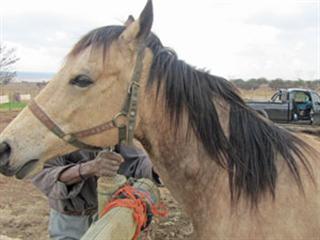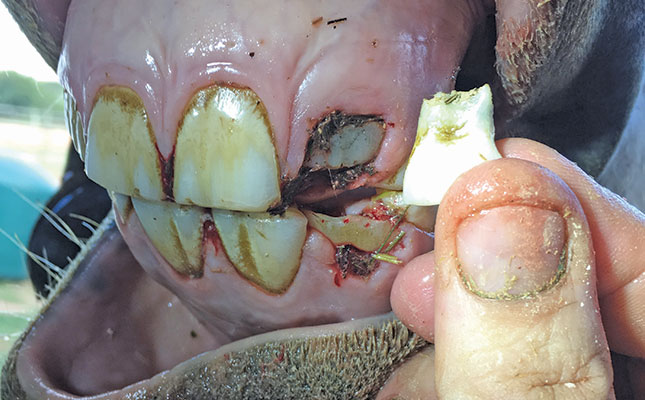
An abscess can occur anywhere in a horse’s body and is caused when a foreign body or infection stimulates the accumulation of white blood cells. These form pus and the system starts walling off the infection or foreign body with fibrous cells. If this occurs in an internal organ, the abscess can become completely sealed off, but when it’s under the skin or in the hoof, pressure usually builds up and the abscess ruptures, expelling pus.
This isn’t the end of the trouble, though, as the wound will often continue leaking pus (suppurating), leading to a long-term chronic sore. Hoof abscesses are commonly caused by penetration of a sharp object, such as a nail or thorn, which stays in the hoof, or introduces infection into the deep tissues. The result is severe lameness. Strangles, an infection caused by Streptococcus equi, causes abscesses in the lymph nodes below the ear and under the throat, as well as in the internal organs.
Under the skin
Abscesses under the skin are also often the result of deep puncture wounds and foreign bodies such as thorns or splinters. In addition, they can be caused by injections, especially if a non-sterile syringe or needle is used. Initially, an abscess is just a hard swelling, often painful to the touch. In the hoof, you’ll feel that one of the bulbs at the back of the hoof is warmer than the other and may be red and inflamed.
Skin abscesses grow bigger and, within four to eight days, the centre or tip of the swelling will become soft. At this stage the abscess is considered ‘ripe’, and can be drained. Antibiotics shouldn’t be injected before an abscess is drained, as you can get what’s called a ‘sterile abscess’ – a hard lump that doesn’t ‘ripen’.
A hoof abscess should be opened by a farrier or vet and flushed with Epsom salts (three tablespoons per cup of water) before being packed with a wound dressing and the hoof bandaged to prevent sand and manure getting into the wound.
The bandage is removed and the wound repacked and the hoof re-bandaged daily for several days or even weeks.
Before draining an abscess under the skin, gently wash the surface with a disinfectant soap. Next, carefully shave the tip of the abscess using a disposable razor (not a clipper, because it can become infected and transfer the bacteria to the next horse you shave).
After draining
A sterile 15-gauge needle is then inserted into the swelling to check whether it is indeed an abscess, or just blood or fluid, or even a hernia. If fluid pus comes out of the needle, the abscess is ripe and can be drained. After draining, antibiotics should be injected. The cavity must then be regularly washed out with salt water (three teaspoons per cup of boiled, cooled water) until all the pus is removed and either blood-tinged or clear fluid comes out. The cavity can also be disinfected with Acriflavine.
It’s important to go on flushing out the abscess for three to five days, preventing the wound from closing until all pus and infectious material has been removed. Acriflavine ointment can also be used on the surrounding skin to keep it clean and discourage flies. It’s usually best to get a vet to drain an abscess under the skin.
Contact Dr Mac at [email protected]. Please state ‘Horse talk’ in the subject line of your email.













